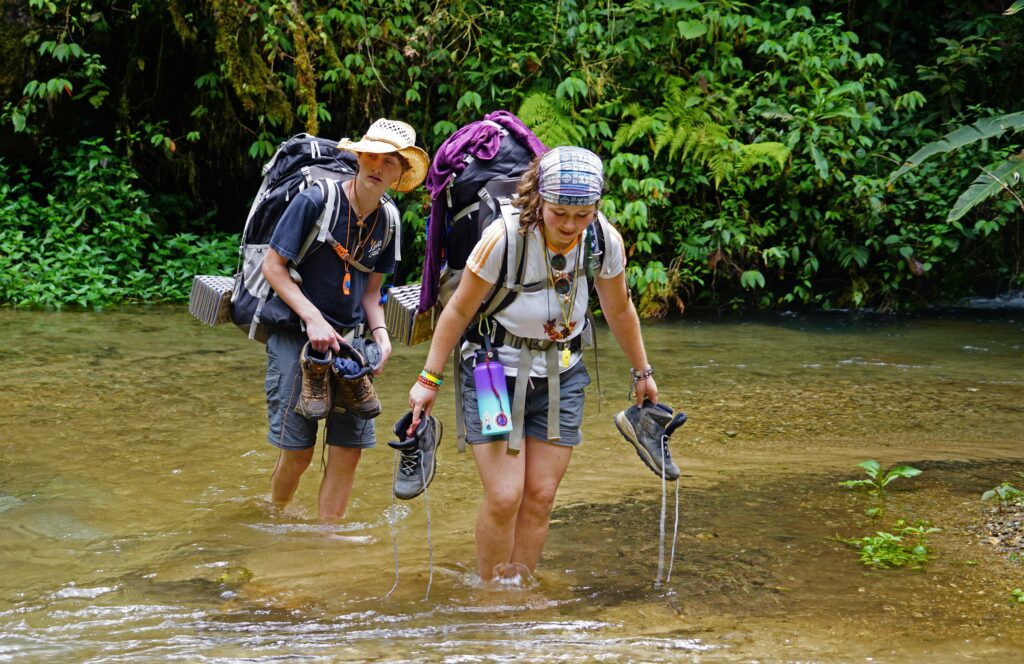
When I first started backpacking, I was drawn to the idea of discovering hidden gems—the kind of places no one talks about. I remember standing on a cliff overlooking a secluded valley, feeling like I’d unlocked something special just by choosing the path less traveled. But that moment was bittersweet; I soon realized that the thrill of adventure often comes hand in hand with risk.
This post isn’t just about how to find those off-the-beaten-path spots; it’s about understanding what you might encounter along the way. Exploring the unknown can be exciting, but it’s also fraught with challenges. Knowing these risks can make your adventure safer and more enjoyable.
Why Go Off the Beaten Path?
So, why should you even consider venturing away from popular attractions? Well, here are a few reasons:
- You experience authentic local culture.
- You may find breathtaking scenery that’s not on the postcards.
- It can be less crowded, offering more peace and solitude.
But here’s the problem: while the perks are undeniable, they come with a healthy dose of risk. It’s essential to understand what you might face.
Understanding the Risks
Physical Safety
First and foremost, your physical safety is crucial. When you venture into less popular areas, resources may be sparse.
For example, trails might be poorly marked, leading to a chance of getting lost. I once hiked through a national park with little signage, getting disoriented for hours. Bring a good map or a reliable GPS app. Familiarize yourself with the area before you head out.
Wildlife Encounters
Wild animals are another concern. When exploring remote areas, you might come face-to-face with wildlife. Bears, snakes, or even angry moose aren’t just cute Instagram photos; they can be dangerous.
Research the area’s wildlife beforehand. Know what to do if you encounter an animal. Carry bear spray if you’re in bear country. And never, ever feed wildlife; it puts both you and the animals in danger.
Health Risks
Health issues are another risk to consider. Access to medical facilities may be limited or non-existent. A simple cut could become infected without proper treatment. Always carry a basic first-aid kit, and know how to use what’s in it.
Stay hydrated and be cautious about drinking water from streams; it can carry parasites. Bring purification tablets or a water filter for peace of mind.
Gear Up Wisely
Proper Equipment
Choosing the right gear is vital for off-the-beaten-path adventures. This isn’t just about comfort; it’s about safety.
Invest in sturdy footwear for rough trails and varying weather. A good backpack that distributes weight evenly will make long hikes much more manageable.
Clothing Choices
Dress in layers. Temperatures can shift drastically, especially in the mountains. A breathable base layer, an insulating middle layer, and a waterproof outer layer can save your trip from being a miserable experience.
Always check the weather forecast before you go. Conditions can change rapidly. Don’t be the person caught in a rainstorm without a poncho.
Emergency Preparedness
Tell Someone Your Plans
This might sound basic, but it’s easy to overlook. Always inform someone of your itinerary, including expected return times. If things go sideways, they’ll know where to start looking for you.
Know Basic Navigation
Smartphones are great, but be mindful: batteries die, and signals can disappear. Knowing how to read a map and use a compass can be a lifesaver.
- Practice navigation skills before your trip.
- Bring a physical map as a backup.
Respect Nature and Local Communities
Leave No Trace
As you explore, remember to respect the environment. Stick to marked paths to avoid damaging wildlife and plants. Carry out what you bring in—this includes trash and leftover food.
Engage with Locals
If you find yourself in a small community, be polite and respectful. Learn a few phrases in the local language. Small gestures can go a long way in building rapport with locals.
Final Thoughts
Off-the-beaten-path adventures can be incredibly rewarding. You’ll uncover unique experiences that big tourist spots simply can’t offer.
However, it’s essential to recognize the risks involved. Being prepared can make all the difference. So gear up, do your research, and maybe carry a bit of courage with you. You might just find that the best memories await where the crowd doesn’t go.
Enjoy the journey, and stay safe!
Related: 10 Essential Tips for Safe Backpacking in Remote Areas
**Related Reading:** – [Related: How to Plan a Solo Trip on a Budget] – [Related: Top Destinations for First-Time Solo Travelers] **#SoloTravel #Exploring #Risks #Backpacker #OfftheBeatenPath #Adventures**